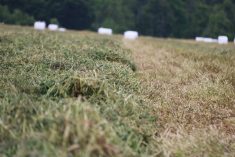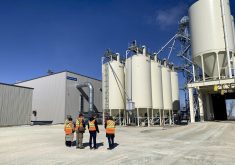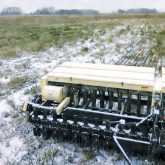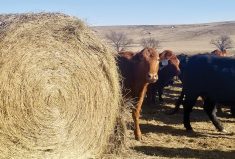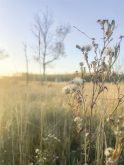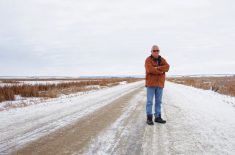Glacier FarmMedia – A new initiative designed to improve alfalfa producers’ access to precision management tools could boost the crop’s popularity and increase production, industry officials say.
Data collection has started for two new alfalfa artificial intelligence (AI) decision management tools across Ontario, Quebec, Nova Scotia and Manitoba.
The project aims to create the database needed to develop decision-making and assessment tools that could make alfalfa more competitive.
In July, the Canadian Forage and Grassland Association received $2 million in federal funding to develop two AI tools — one identifies the agronomic, climatic and soil-related factors affecting alfalfa yield and nutritional value, and the other assesses winter survival rates.
Read Also

Local farm businesses, groups look forward to Manitoba Ag Days 2026
Most of agriculture is seemingly at Manitoba Ag Days each January: Manitoba agribusinesses and farm groups look forward to connecting with farmers at the 2026 show.
The forage sector hasn’t kept pace with other crops in terms of capitalizing on satellite imagery and smart agriculture-type applications, said Cedric MacLeod, the association’s executive director.
Forage accounts for 72 million acres across Canada but without tools like those available for annual crops, the sector will continue to lose acres because it is less competitive, he said.
“Anything we can do to push yield to be more efficient, more effective, raise the net revenue per acre on forage and try to keep us neck and neck with the annual cropping sector, the more forages we’re going to keep on the landscape,” he said. “Right now, that’s one of our main goals.”
The sector lacks a central database like ones compiled for the annual crop sector or the one Lactanet Canada has for the dairy industry, said Maxime Leduc, a post-doctoral researcher in agronomy who is leading the project.
“If you need to develop a model, you need diversified data — data collected in different green conditions, with different fertilizer applications, and so on,” Leduc said. “At the same time collecting data for a new project is very expensive. It’s why in this project, we collaborate for both.”
He said there are 40 field advisers or agronomists collecting yield data on 80 farms in the four provinces and 245 measuring stem count to assess winter survival.
Numerous factors play into that process, including assessing plant biotics, chemical and physical soil factors along with weather. (Was there snow or no snow, and how did that impact winterkill?)
“We have to build the algorithms to train the satellites to understand what it is that they’re seeing, so that we can make management decisions on how to correct actions or how to keep doing the right thing,” MacLeod said.
But ground truthing that level of data is costly.
While $2 million is significant, the actual cost of the two AI tools will be closer to $4 million considering the value of universities, scientists, agronomists, private companies and producer partnerships, Leduc said.
The queen’s big weakness
“Alfalfa is the queen of forage in Canada, but she has a weakness, and this weakness is, as a perennial plant, it’s susceptible to winterkill,” said Leduc.
Loss could be triggered by nutrient deficiencies, poor cutting management or soil pH that falls outside of the ideal 6.5.
“All these small factors could have an impact on winter survival,” said Leduc. “The problem for the agronomist and producer is they don’t know which one is the real factor, and they don’t know if they have a problem or not for winter survival.”
The winter survival tool will assess risk regarding survival over winter and consider whether alfalfa management must be adjusted or confirm winterkill is simply due to weather.
The yield and nutritive value tool will take a sample analysis and interpret the cost of correcting soil fertility or restoring pH. It will also assess impact on future forage quality and estimate tonnage losses per acre if no action is taken.
As slick as AI and satellite technology is, MacLeod said, the key is identifying what’s happening in the field from an imagery perspective and then ground truthing what the satellites see to create effective tools.
“There’s a lot of complicated pieces that go along with forage, and to build a program like this,” said MacLeod.
Diana Martin is a reporter for Farmtario. Her article appeared in the Oct. 4, 2021 issue.



